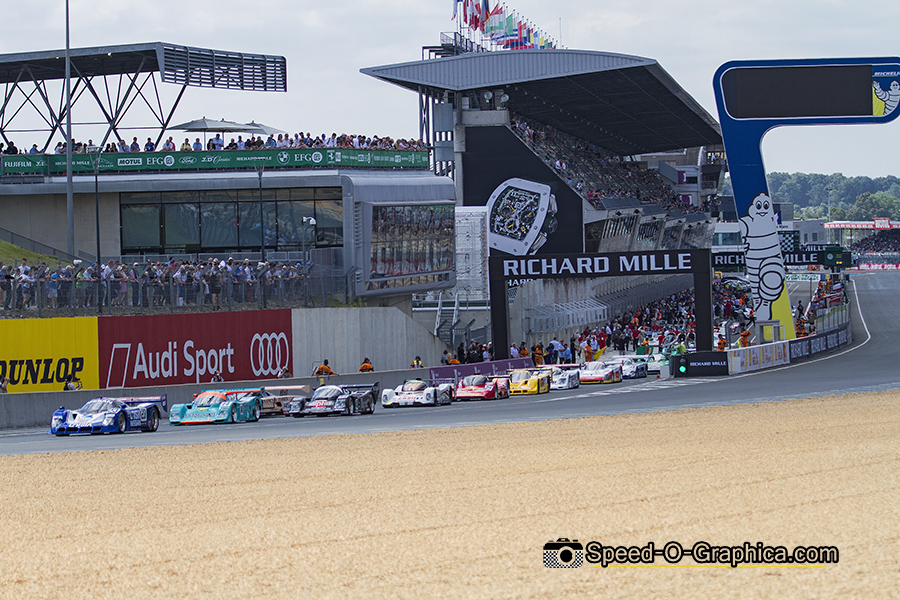
By Marcel Hundscheid / Speed-O-Graphica
We continue our Group C retrospective with a closer look at Grid, Harrier and Jaguar.
Grid
Grid Racing was formed by Italian-born Guiseppe Risi and Briton Ian Dawson. They entered endurance racing in 1981, running a Lola T600 in the FIA World Championship for Emilio de Villota and Guy Edwards.
After a successful episode with their Lola, the pair decided to build their own car for racing under Group C rules. Former Lotus employee Geoff Aldridge designed the Grid Plaza S1, which was powered by a 3.3-litre Cosworth DFL and featured advanced aerodynamics.
Plagued by a troublesome DFL engine accompanied by aerodynamic, issues the S1 was followed by the S2 at the beginning of 1984. Remarkably, this car was powered by a Porsche 935 twin turbo engine.
After debuting at an IMSA race in Miami, it appeared at a world championship race in Monza. More races followed including the 24 Hours of Le Mans. In March 1985, the S2 made its final appearance, where it also featured a Porsche 956 style nose.
Harrier
The little Mazda-powered Harrier RX83C was in fact the very first Group C Junior car. Group C Junior was introduced by the FIA aimed at small independent manufacturers, with specifications featuring lower minimum weight and fuel capacity.
The car was developed by Lestor Ray, based on an aluminum sheet monocoque and powered by a Mazda rotary engine. It debuted in 1983 at the Monza 1000 km race. After a disappointing start, the car was entrusted to JQF Engineering. Equipped with a reworked suspension and revised fuel and cooling systems it managed to finish in 14th place at Spa-Francorchamps. Two weeks later the Harrier would make its final appearance at Brands Hatch.

Jaguar
British manufacturer Jaguar backed up Bob Tullius’ Group 44 and Tom Walkinshaw’s TWR Racing activities, resulting in a series of Jaguar XJR sports cars. Group 44 participated in the American-based IMSA GTP Championship, while TWR Racing saw action in the FIA World Sportscar Championship. In this article, we focus on the cars that were built under Group C rules.
Jaguar’s XJR-6 was designed by Tony Southgate, built around a carbon-composite monocoque. Two XJR-6 debuted at an 1985 World Endurance Championship race at Mosport Park, surprising the world with a 3rd and 5th place during qualifying. After struggling with some technical issues, Martin Brundle was able to finish third behind two Rothmans Porsche 962s. Six XJR-6 were produced.
The Jaguar XJR-6 was followed by the XJR-8, which appeared in 1987. Although the XJR-8 was similar to the XJR-6, it used a 7-litre V12 engine capable of 720 hp. The XJR-8 became a huge success and TWR Racing managed to score victories in Silverstone, the Nürburgring and Spa along the way to victory in the world championship.
Jaguar entered three cars at the Le Mans 24 Hours. While two didn’t make it through to the chequered flag, the third car finished 5th after being held up by problems with the gearbox.

The post Group C: The Rise and Fall of the Golden Age of Endurance Racing: Cars and Constructors Part 6 appeared first on Motorsport Retro.